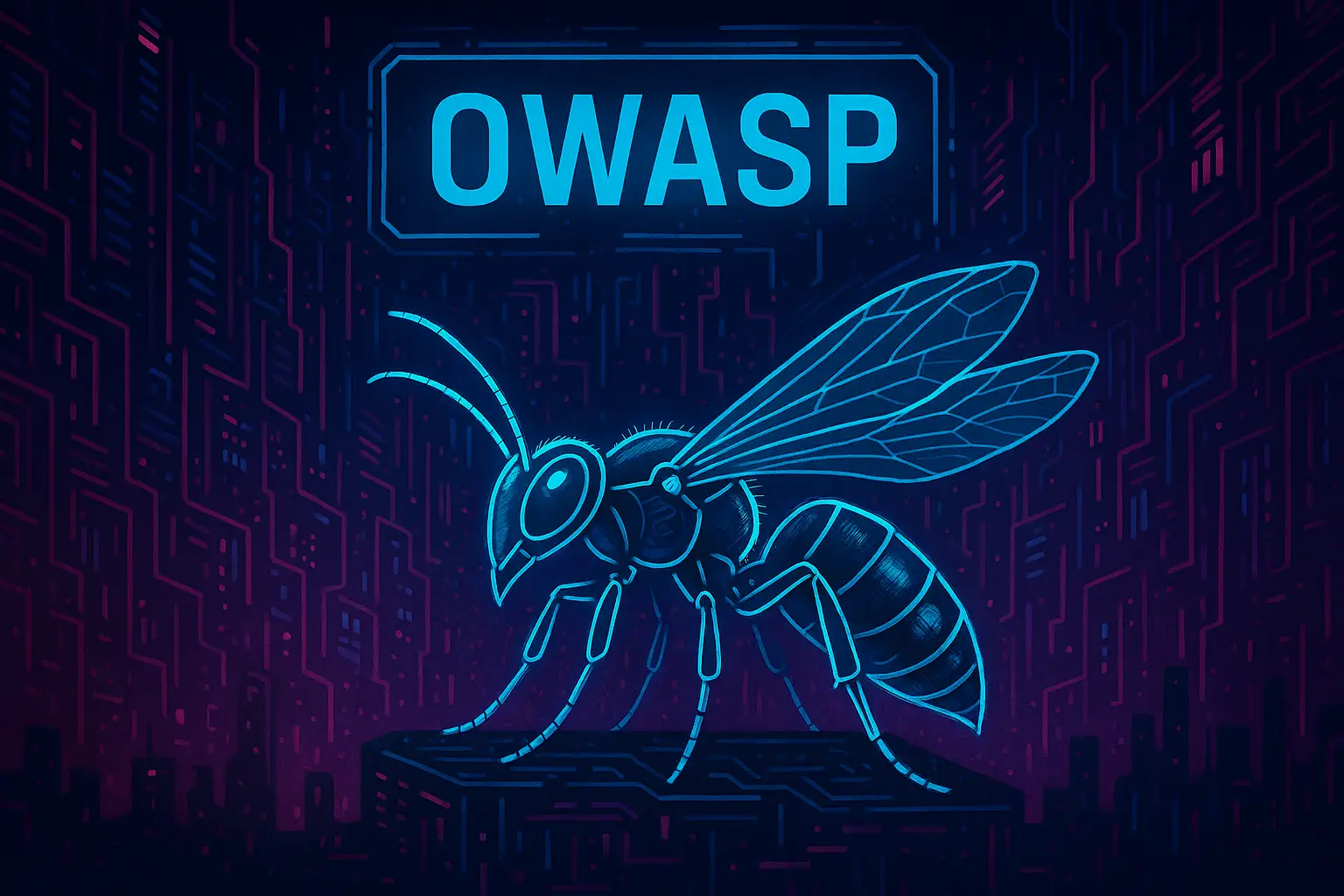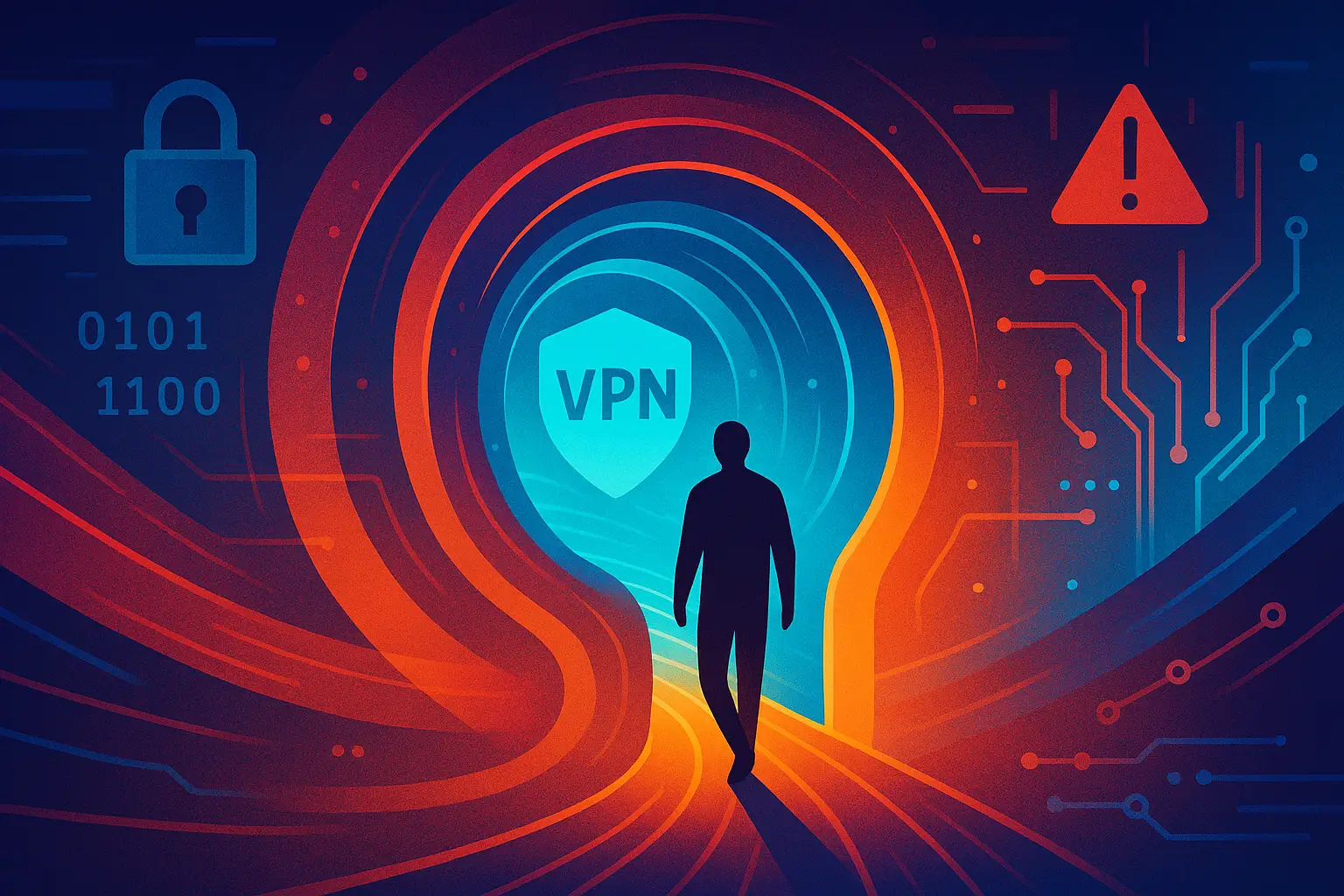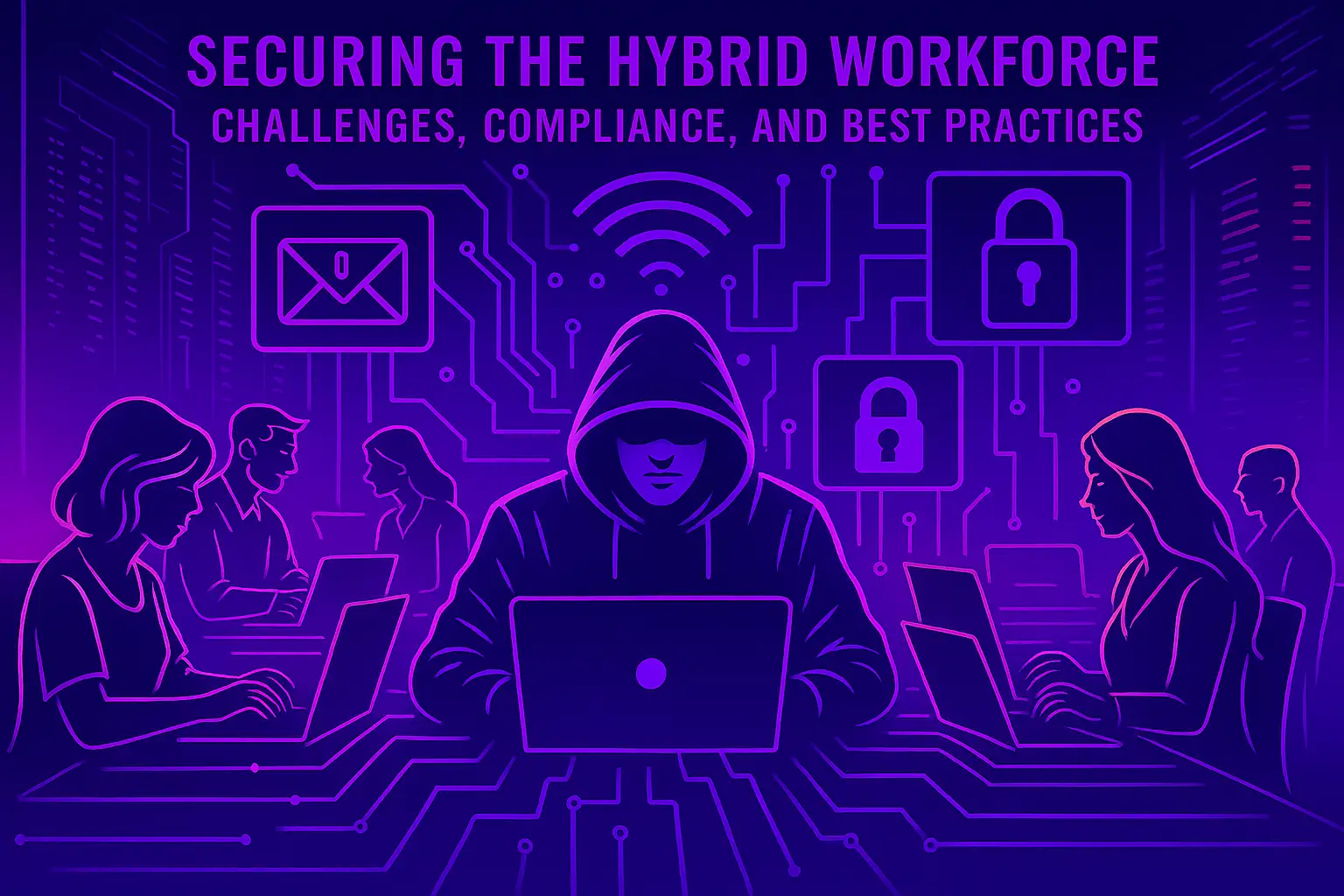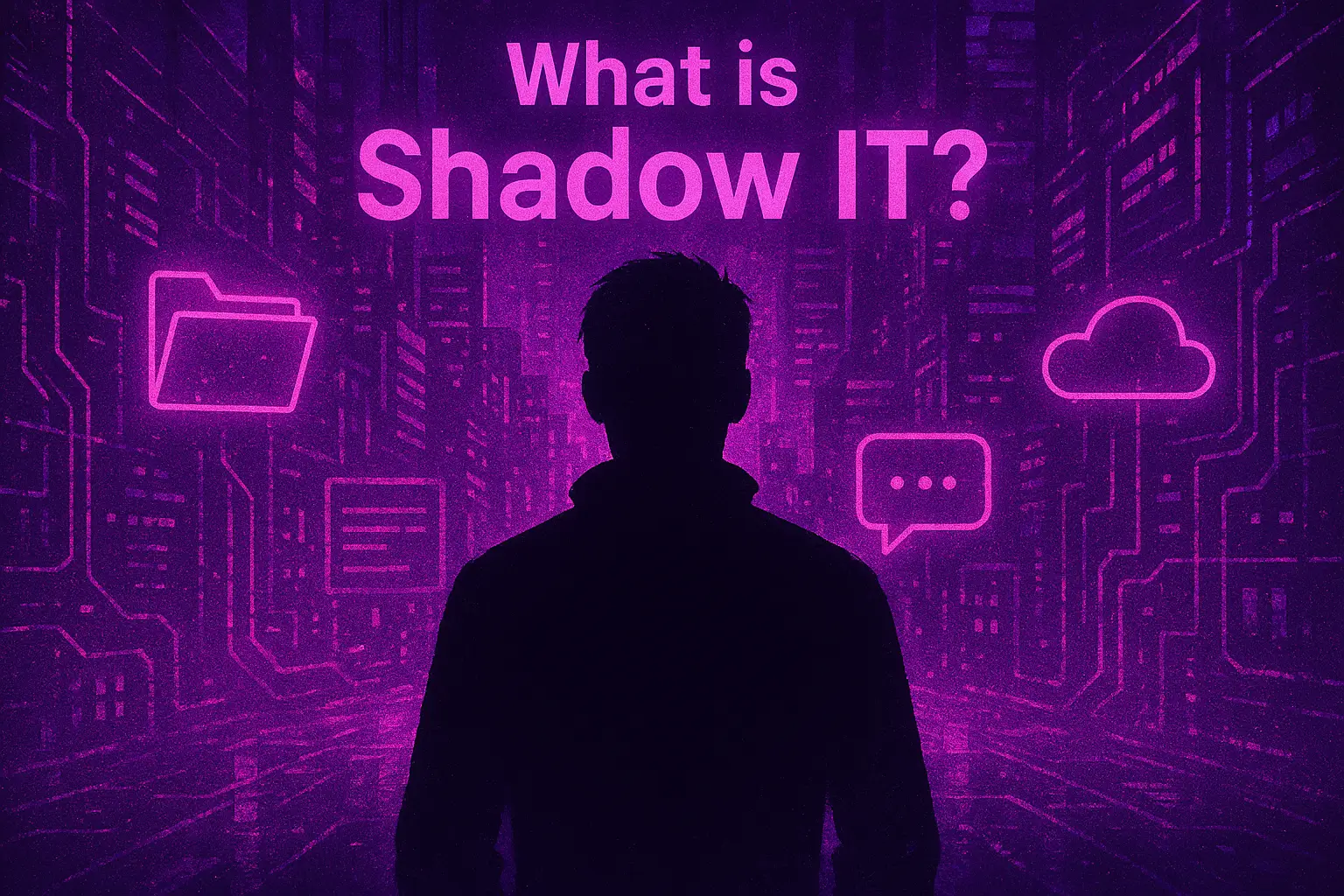UK Cyber Defence’s SOC365 is a cutting-edge Security Information and Event Management (SIEM) service platform that forms the backbone of the company’s SOC-as-a-service offering. Designed in formal collaboration with Wazuh – a renowned open-source security platform – SOC365 combines open-source innovation with bespoke enhancements to deliver a comprehensive managed SOC solution. In essence, SOC365 leverages Wazuh as its foundation, augmenting it with Cyber Defence’s advanced components to provide round-the-clock threat monitoring, detection, and response. This article explores the evolution of SOC365 over the past year, from its open-source roots in Wazuh and other SIEM tools to the custom features UK Cyber Defence has developed, including an integrated EDR/XDR agent, a network detection appliance, and an internal AI for intelligent alert correlation. We also discuss key milestones in the platform’s development, such as dramatic reductions in incident response times and successful deployments across industries, and how SOC365 helps organisations meet strict security compliance standards like ISO 27001, NIST, DORA, and GDPR. We highlight why SOC365 has become an effective and user-friendly solution for IT leaders such as CISO’s, IT managers, and security engineers seeking top-tier cyber defence.
Open-Source SIEM Foundations: OSSEC, ELK Stack, Graylog, and Wazuh
Modern SIEM solutions owe much to the open-source projects that paved the way. OSSEC, first released in 2005, is one of the earliest open-source host intrusion detection systems (HIDS). It introduced the ability to monitor log files, check file integrity, detect rootkits, and alert on suspicious activities across multiple platforms. However, OSSEC lacked some features of a complete SIEM; for instance, it had no built-in user interface or comprehensive log management and analytics and relied on external visualisation tools. As cyber threats grew more complex, organisations often needed to supplement OSSEC with additional tools to achieve a complete security monitoring solution.
Around the same time, the ELK Stack (Elasticsearch, Logstash, and Kibana) rose to popularity as a powerful log management and analytics platform. The ELK Stack became a cornerstone for many do-it-yourself SIEM deployments due to its ability to ingest and index large volumes of data and present rich visualisations. Yet, while extremely powerful, ELK is not a turnkey SIEM – out-of-the-box, it lacks built-in security rules, alerting and reporting capabilities, requiring significant custom development or add-ons to function as a SIEM. Organisations using ELK for security monitoring often had to “hand-roll” threat detection content or integrate other tools to fill these gaps. This made pure ELK solutions resource-intensive for teams without dedicated engineering resources.
Graylog emerged as another open-source solution to simplify log management and SIEM functions. Graylog provides a centralised platform to collect, store, and analyse log data from various sources in real-time. It offers features like powerful search queries, custom dashboards, user access controls, and an alerting engine. Many organisations adopted Graylog for its efficient log analysis and monitoring capabilities, appreciating how it could detect anomalies and help meet compliance requirements by retaining and organising logs centrally. However, like the ELK stack, Graylog focused on log analytics and alerting; it did not inherently include host-based intrusion detection or endpoint agents out of the box.
Wazuh entered the scene by combining the strengths of these predecessors into a unified platform. Wazuh began as a fork of OSSEC, extending that HIDS’s functionality and transforming it into a more complete SIEM/XDR solution. Wazuh is built atop the Elastic Stack (it uses Elasticsearch for storage/indexing and Kibana for dashboards), effectively blending OSSEC’s real-time threat detection and agent-based monitoring with ELK’s scalability and visualisation. The result is a free, open-source platform offering enterprise-grade SIEM features. Wazuh retains OSSEC’s capabilities (log analysis, file integrity monitoring, rootkit detection, etc.) while adding a rich web UI, centralised management, and a broad ruleset for detecting threats and suspicious behaviour. It also integrates well with orchestration tools like Docker, Ansible, and Kubernetes, and even supports cloud monitoring (e.g. AWS and Azure) for modern infrastructure. Importantly, Wazuh introduced active response mechanisms – the ability to execute countermeasures when specific threats are detected automatically – and provided built-in security rules and decoders to recognise various attacks. These features significantly closed the gap, making Wazuh a robust open-source alternative to costly commercial SIEM’s.
When UK Cyber Defence set out to build its SOC365 platform, it evaluated these open-source tools for a scalable, flexible core. Wazuh stood out as the ideal foundation for SOC365 due to its unification of SIEM and XDR capabilities and its proven reliability in large-scale deployments. Wazuh’s heritage from OSSEC meant it came with mature endpoint intrusion detection. At the same time, its elastic-based architecture ensured it could handle the thousands of events per second, which is typical of a busy security operations centre. Moreover, Wazuh’s open-source nature and modular design allowed Cyber Defence to customise and extend it to meet specific needs – something less feasible with closed-source commercial SIEMS. In contrast, using a plain ELK Stack or Graylog alone would have required developing custom detection content and tying together disparate tools. In comparison, Wazuh provided a more integrated starting point with active security intelligence built in. One industry observer noted that Wazuh is “enterprise-ready… free and open-source… providing comprehensive monitoring and threat detection”[1], making it attractive for a managed service backbone.
Why Wazuh Was Chosen for SOC365
UK Cyber Defence’s decision to choose Wazuh as the core of SOC365 was reinforced by a strategic partnership with the Wazuh team in mid-2023. According to Cyber Defence’s CISO, Peter Bassill, “Wazuh provides us with an innovative, flexible, and potent active response capability that we have seamlessly integrated into our SOC-as-a-Service platform. With the Wazuh technology stack, we underpin our market leadership by providing Extended and Managed Detection and Response (X/MDR) services to all our global customers. Wazuh’s flexibility allows us to deploy to clients in the maritime sector on ships, oil rigs, and mobile platforms.” This endorsement highlights several reasons why Wazuh was chosen over other open-source SIEM options:
- Active Response and Advanced Detection: Wazuh’s built-in active response was a key differentiator. This meant that SOC365 could detect threats and automatically defend against them (for example, by quarantining an infected host or blocking a malicious IP) – a capability lacking in or required by add-ons in tools like vanilla ELK or Graylog. Cyber Defence leveraged this to deliver “potent” defensive actions as part of its managed service.
- Flexibility and Integration: As a platform, Wazuh offered immense flexibility. Its open APIs and modular design allowed Cyber Defence to integrate Wazuh into the broader SOC365 architecture, including tying it with Graylog and custom AI (described later). This interoperability also extended to client environments – for example, deploying Wazuh components in isolated or challenging scenarios such as aboard ships or oil rigs. The ability to run in such environments, even with intermittent connectivity, was critical for serving maritime and remote logistics clients.
- Unified XDR and SIEM: Wazuh markets itself as a unified XDR (Extended Detection and Response) and SIEM platform. In practical terms, Cyber Defence could use Wazuh not just for log collection and correlation, but also to cover endpoint security (via agents) and cloud workload protection, all under one umbrella. This comprehensiveness was preferable to piecing together multiple solutions (one for log management, one for endpoint telemetry, etc.). By building on Wazuh’s “multi-platform agents” and scalability, SOC365 could achieve 24/7 monitoring across on-premise, cloud, and hybrid environments without a heavy cost burden.
- Cost-Effectiveness and Open Source: Wazuh eliminated license fees as an open-source solution, allowing Cyber Defence to invest resources into customising and supporting the platform. For a security provider like Cyber Defence, having complete visibility into the code and the freedom to modify the SIEM engine was a considerable advantage over proprietary SIEMs. This choice ultimately benefits SOC365 clients as well, as cost savings and improvements can be passed on in the managed service. It aligns with the trend of organisations seeking cost-effective security options – Wazuh is often praised as “a prudent choice for cost-conscious organisations” that offers enterprise features without the hefty price.
In summary, Wazuh was selected as the cornerstone of SOC365 because it delivered the right mix of capabilities, flexibility, and openness that Cyber Defence needed to build a world-class SOC platform. Cyber Defence’s partnership with Wazuh ensured direct support and collaboration as they extended the platform’s capabilities. With this solid foundation, the development team at UK Cyber Defence spent the past year enhancing Wazuh further, turning SOC365 into a bespoke solution that goes far beyond a standard Wazuh installation.
Enhancing Wazuh: Custom EDR, NDR, and AI in SOC365
Building on Wazuh’s foundation, UK Cyber Defence integrated several custom components into SOC365 to address all modern detection and response facets. The goal was to create a holistic security platform that analyses logs (traditional SIEM duty), actively monitors endpoints and networks, and intelligently filters signals from noise. Over the last 12 months, Cyber Defence’s engineers achieved this by adding:
- An Extended Endpoint Agent (EDR/XDR): While Wazuh already employs agents on endpoints for data collection, Cyber Defence augmented this with their enhancements to create a robust Endpoint Detection and Response (EDR) capability. This meant deploying an XDR agent on servers, PCs, and other host systems for SOC365 clients[2]. These agents gather rich telemetry, not just system logs, but also information on running processes, network connections, user activity, and even suspicious behaviours in memory. The agent feeds this data into the SOC365 platform in real time. By extending Wazuh’s agent in this manner, Cyber Defence ensures that endpoint coverage is comprehensive: malware infections, privilege abuse, lateral movement and other endpoint threats can be detected quickly. Crucially, the agent approach means even remote or roaming devices (like a consultant’s laptop off-site) are continuously monitored and protected, as long as they have an internet connection. This custom EDR/XDR agent is central to SOC365’s promise of end-to-end security monitoring, allowing Cyber Defence to proactively hunt threats on client endpoints and not just wait for log events.
- Network Detection & Response (NDR) Appliance: Cyber Defence developed a Network Detection and Response appliance that integrates with SOC365 to complement the endpoint visibility. This appliance can be a physical or virtual sensor placed in the client’s network (for example, at a core switch, data centre, or cloud environment) to monitor network traffic passively for signs of threats. It works with Wazuh by parsing network flows and alerts from sources like IDS/IPS (Intrusion Detection/Prevention Systems). In essence, the NDR appliance brings in the network perspective, spotting things like port scans, malicious payloads, anomalous traffic patterns, or command-and-control beaconing that might not appear in endpoint logs. By correlating this network data with the endpoint events, SOC365 achieves true XDR, seeing the complete picture of an attack. For example, suppose the NDR sensor detects a suspicious outbound connection, and at the same time, an endpoint agent reports a new process execution. In that case, the platform can tie these together as part of one security incident. The NDR component greatly increases detection fidelity for advanced threats (including those that try to evade host-based defences), ensuring that even purely network-based attacks (such as an IoT device compromise or a rogue insider exfiltrating data) are caught.
- “Hedgey” – an Internal AI for Alert Correlation: One of SOC365’s most significant enhancements is integrating UK Cyber Defence’s proprietary AI engine, affectionately nicknamed “Hedgey”. This is an internal Large Language Model (LLM) based artificial intelligence designed to ingest the deluge of alerts and events coming from Wazuh, the EDR agents, and the NDR appliance, and make sense of them. Hedgey operates as the intelligent brain of SOC365, performing multi-dimensional correlation and prioritisation of alerts. Every day, thousands upon thousands of individual security events are collected across a client’s endpoints and networks; rather than overwhelm analysts with this volume, Hedgey correlates these events over a 24-hour (and longer) period to identify patterns and likely incidents. It looks for connections between seemingly disparate alerts. For instance, a series of failed logins on one server, a malware detection on an endpoint, and an unusual outbound connection might all be linked as part of a coordinated attack. By analysing context and historical data, the AI can group such events and even predict the progression of an attack. According to UK Cyber Defence, their internal AI “correlates thousands of events per second to identify likely correlations” and provides the SOC team with proactive insights. In practice, Hedgey translates raw JSON alerts from Wazuh into human-friendly incident narratives, complete with relevant context. It will annotate an alert with information like: “This alert is related to an earlier event on another host” or “This sequence of actions resembles tactics of known ransomware – recommend immediate isolation of the affected system.” This intelligent correlation dramatically reduces false positives and alert fatigue by filtering noise and highlighting what truly matters. As a result, SOC analysts using SOC365 can respond to incidents far more efficiently, focusing on a curated list of high-priority alerts rather than sifting through thousands of raw events. Hedgey’s machine learning algorithms also continually learn from feedback. As analysts resolve incidents, the AI uses that outcome data to refine its future correlations and recommendations, effectively getting smarter over time[3].
These custom components – the enhanced EDR/XDR agent, the NDR network sensor, and the Hedgey AI – elevate SOC365 beyond a standard SIEM deployment. UK Cyber Defence has created an integrated security ecosystem: endpoints and network feeds provide extensive coverage, Wazuh (with Graylog) provides the data processing and detection rules, and the AI brain stitches it into actionable intelligence. This means that when SOC365 alerts a potential incident, it’s often a well-vetted, correlated incident rather than a single ambiguous log entry. The benefit to clients is clear: faster detection of complex threats, fewer missed incidents, and far less time their teams spend investigating noise. It reflects a shift from collecting security events to truly understanding them – an increasingly necessary shift as organisations deal with millions of security events daily.
Intelligent Orchestration and Automated Response
SOC365 not only finds threats; it is built to respond and integrate with clients’ existing systems in a flexible, streamlined way. A core design principle for UK Cyber Defence was to enable no-code orchestration within the SOC365 platform. This means complex incident response workflows can be executed automatically without requiring custom scripting or software coding for each client integration.
In practical terms, the SOC365 orchestration engine allows Cyber Defence’s SOC and the client to define automated playbooks through a user-friendly interface. These playbooks can leverage the intelligence from Hedgey AI and the detection rules to trigger a series of actions whenever certain conditions are met. For example, suppose SOC365 confirms a ransomware outbreak on a workstation (through correlated endpoint and network indicators). In that case, an orchestration playbook might immediately isolate that machine from the network, turn off the user’s credentials in Active Directory, and automatically create an incident ticket in the client’s IT service management system. The no-code platform might present this as a drag-and-drop workflow: IF “ransomware detected” THEN “isolate host” AND “notify IT and SOC”. Because it’s no-code, these integrations can be done quickly and adapted on the fly, whether the client uses common systems like Jira, ServiceNow, Slack, or more niche in-house tools.
This flexible integration is vital for clients across different industries with their technologies and processes. SOC365’s orchestration engine is a universal translator and glue between SOC365 and client systems. For instance, a financial services client concerned with fraud might integrate SOC365 with their transaction monitoring system to automatically halt certain transactions when an alert fires. A maritime client might incorporate it with shipboard operational technology controls to ensure a suspicious event triggers an alert on the bridge. Cyber Defence’s approach frees clients from needing heavy lifting to connect the SOC output to their operations – instead, SOC365 slots into their environment with minimal friction.
Additionally, automated workflows drastically reduce incident response times. They enable what is often called SOAR (Security Orchestration, Automation, and Response) capability. Rather than waiting for a human to notice an alert and then log into various systems to take action, SOC365 can perform initial containment within seconds or minutes. This speed is crucial during a malware outbreak or an active intrusion, where every minute counts in preventing the spread of data loss. The orchestrator can also automatically enrich alerts, pulling in threat intelligence context, looking up asset information, or any data-gathering steps that would otherwise consume analysts’ time.
For clients, this no-code orchestration translates to peace of mind: they know that when SOC365 detects something, it can call the fire brigade and start spraying water on the flames immediately. Of course, the human SOC team is still in the loop to make higher-level decisions and handle complex incidents, but automation reliably handles the repetitive and time-sensitive actions. This harmony of human expertise with machine speed is a defining feature of SOC365’s service quality.
Pulse Guardian: A Unified Web and Mobile Interface
To ensure the rich capabilities of SOC365 are easily accessible and transparent to clients, UK Cyber Defence provides a client-facing interface called Pulse Guardian. Pulse Guardian serves as the window into the SOC365 platform for client stakeholders – from CISOs who need high-level overviews and reports, to IT managers and security engineers who want detailed, hands-on views of incidents and system status.
The Pulse Guardian interface is offered as a secure web portal and a mobile application, reflecting Cyber Defence’s understanding that today’s IT leaders need information on the go. Users can log in from anywhere through the web interface and be greeted with a dashboard summarising their security posture in real time. They can see active alerts, incident tickets, system health metrics, and compliance status at a glance. The design follows formal enterprise UX principles, making it intuitive to navigate through different modules such as “Alerts,” “Reports,” “Asset Inventory,” or “Compliance.” A CISO, for example, might quickly pull up a report on how the company is doing against ISO 27001 control requirements, or check the number of high-severity incidents in the last quarter. Meanwhile, a security engineer could drill down into a specific alert, viewing the correlated events timeline assembled by Hedgey AI, complete with affected hosts, users, and recommended response steps.
What sets Pulse Guardian apart is its interactive and collaborative features. Clients can use the portal to directly communicate with the Cyber Defence SOC team – for instance, acknowledging an alert, adding notes (such as “this is a known false positive in our environment”), or requesting further investigation on something that looks suspicious. The platform can send push notifications or SMS/email alerts for critical events, configurable to the client’s preferences, ensuring that the right people are notified immediately through Pulse Guardian’s mobile app. The mobile version of Pulse Guardian is optimised for quick notification and confirmation actions: if a severe incident is detected at 3 AM, the on-call IT manager could receive a push notification on their phone, open the app to see a brief of the incident (as compiled by the AI), and acknowledge that they’ve seen it – all within seconds. They could also trigger response actions from the mobile app if needed (for instance, pressing an “Approve Isolation” button if the SOC asks for permission to isolate a server).
Regarding usability, Pulse Guardian was developed with busy IT leaders in mind. It distils the complexity of a modern SOC into an easily digestible format. Graphs and colour-coding highlight trends (e.g. decreasing or increasing incident volumes), and natural language summaries (courtesy of the AI) clarify what happened and why it matters. Users don’t need to be SIEM experts to interpret the data; Pulse Guardian presents information in business-relevant terms. For example, rather than just showing raw log lines about a malware detection, it might display: “Malware X detected on Finance-Server-2. Action taken: file quarantined. Impact: confidential files were accessed – potential data breach averted.” This level of clarity and detail empowers clients to confidently brief their executives or respond to auditor queries using information straight from the portal.
Ultimately, Pulse Guardian ensures that SOC365 is not a black box operating in the background, but a transparent and interactive service. Clients remain in control and informed about their security, with the convenience of multi-platform access. Whether in the office using a desktop browser or travelling with only a smartphone, IT leaders can stay connected to their security operations through Pulse Guardian, bolstering trust and collaboration with Cyber Defence’s SOC team.
A Year of Evolution: Key Milestones and Achievements
In the 36 months since integrating Wazuh, UK Cyber Defence’s SOC365 platform has reached several impressive milestones, underscoring its rapid maturation and effectiveness as a managed SOC solution.
Dramatically Faster Incident Response
One of the clearest impacts of SOC365 has been the reduction in incident detection and response times for clients. By combining 24/7 monitoring, AI-driven correlation, and automated actions, SOC365 is catching and reacting to threats in minutes – a feat many in-house teams struggle to achieve. For example, in a simulated breach exercise at a London law firm client, SOC365 identified and contained an unauthorised access attempt within four minutes. The platform immediately flagged the suspicious activity, and Cyber Defence’s analysts swiftly intervened to block further access. This response speed, measured in minutes (sometimes seconds), is critical in limiting damage during real attacks. Over the past year, Cyber Defence reports that the average time to detect and respond to high-priority incidents has plummeted, transforming clients’ security posture. In contrast, before adopting SOC365, some organisations would take hours or days to notice a breach – a window that attackers would readily exploit. Now, with SOC365’s continuous vigilance, threats are often stopped in their tracks before they can escalate.
Active Malware and Ransomware Defence
An essential advancement introduced in the past year is SOC365’s proactive malware and ransomware defence strategy. This capability has been enhanced through the tight integration of endpoint agents with industry-standard tools such as YARA and Chainsaw. YARA provides robust signature-based detection, enabling SOC365 to swiftly identify known malware variants at the endpoint. Chainsaw complements this by offering advanced log analysis to detect suspicious behavioural patterns indicative of sophisticated threats. Additionally, the platform employs DNS blackholing, disrupting communication between compromised endpoints and command-and-control (C2) servers, thereby effectively neutralising ransomware and malware spread before significant harm can occur.
Routine Vulnerability Scanning Integration
SOC365 has also significantly expanded its vulnerability management capabilities through deep integration with robust scanning tools, including OpenVAS and OWASP Zap. OpenVAS provides comprehensive infrastructure and network vulnerability assessments, while OWASP Zap is deployed for thorough application security testing. This dual integration ensures that infrastructure and applications are continuously assessed, vulnerabilities promptly identified, and remediation seamlessly managed through the SOC365 platform.
Introduction of Tiered Data Storage
Recognising the importance of efficient data management, Hedgehog Security introduced a sophisticated tiered data storage strategy within SOC365, enhancing performance and cost efficiency:
HOT and WARM Data Stores
To facilitate rapid access and analysis, SOC365 employs HOT data storage, leveraging ultra-high-speed storage solutions and maintaining the most recent seven days of alert and event data. This ensures immediate accessibility and performance critical for real-time incident analysis. Data aged between seven and 30 days moves automatically to WARM storage, utilising standard high-speed storage solutions. This balanced approach maintains data accessibility and speed, which is crucial for short-term historical incident correlation.
COLD Data Stores
Data over 30 days transitions to COLD storage, leveraging cost-effective, high-capacity storage solutions for 30 to 360 days. This ensures long-term retention of security event data necessary for trend analysis, compliance reporting, and retrospective incident investigations without incurring unnecessary storage costs.
ICE Data Stores
For archival storage beyond one year, SOC365 utilises ICE data stores, employing secure Amazon S3 bucket storage. This indefinite archival system ensures compliance with regulatory requirements that mandate long-term data retention, such as ISO27001 and GDPR. The ICE storage strategy provides cost-effective, reliable long-term storage for audit, forensic, and compliance purposes, ensuring data integrity and availability whenever historical data retrieval is required.
Successful Multi-Sector Deployments
Cyber Defence has rolled out SOC365 across various industries, proving the platform’s adaptability and broad appeal. SOC365 is deployed on ships and oil rigs in the maritime sector, providing cyber defence to critical maritime operations even in remote conditions. This has helped shipping and offshore companies protect navigation and control systems from cyber threats, a growing concern as maritime systems become more connected. In transportation and logistics, companies have embraced SOC365 to safeguard supply chain continuity – the platform’s real-time monitoring has prevented cyber incidents from disrupting the flow of goods, with 24/7 surveillance averting downtime[4]. The legal sector has seen case studies like the law firm mentioned, where SOC365 significantly uplifted security for highly sensitive client data and gave partners peace of mind. Educational institutions (such as universities and schools) have partnered with Cyber Defence; SOC365 helps them monitor campus networks and research data, often targets for intellectual property theft, all while coping with limited IT security staff. In financial services and banking, where regulations are stringent and the threat of fraud and data breaches looms large, SOC365 has been a game-changer. Cyber Defence’s presence in the financial sector – from small fintech firms to larger banks – is growing, as these organisations see the value in an affordable yet powerful SOC that keeps them compliant (with standards like PCI DSS) and secure around the clock. According to UK Cyber Defence, the platform now protects clients in banking, financial services, e-commerce, education, government, and healthcare, demonstrating its versatility. Notably, even government agencies in the UK have trusted SOC365; major organisations like the UK Government and The Welding Institute have praised its robust monitoring and proactive threat hunting capabilities. Achieving successful deployments in the maritime and healthcare sectors within a year speaks to the robustness and flexibility of SOC365’s architecture.
Enhanced Compliance and Regulatory Support
SOC365 has emphasised helping clients meet their regulatory and security standard obligations throughout its development. Many organisations struggle with compliance requirements such as ISO 27001 (information security management), NIST frameworks (like NIST 800-53 security controls), the EU’s new DORA (Digital Operational Resilience Act for financial entities), and GDPR (data protection regulation). SOC365 simplifies compliance on multiple fronts. First, it provides comprehensive logging and auditing – every security event, response action, and change is recorded and can be reported, which is essential for standards that demand audit trails. Wazuh’s built-in ruleset already supports mapping to controls in frameworks like PCI DSS, HIPAA, NIST 800-53, and GDPR[5] Cyber Defence has extended this with custom rules for UK-specific standards and emerging regulations like DORA. For instance, ISO 27001 requires continuous monitoring of security events and prompt incident handling – SOC365 fulfils this by design, and it can produce reports showing compliance with relevant ISO controls (such as Annexe A.12 on event logging and A.16 on incident management). NIST guidelines emphasise detection and response capabilities; SOC365’s alignment to NIST 800-53 control families (e.g. SI-4 on information system monitoring) is evident in its actively monitoring systems and generating real-time alerts. DORA, which financial institutions must comply with, mandates resilience through incident detection, reporting, and response. SOC365 helps meet DORA requirements by providing continuous threat monitoring and quarterly reporting that the regulation calls for – if an incident occurs, SOC365 not only detects it but also facilitates the prompt notification and evidence collection needed for regulatory reporting. GDPR compliance is bolstered by SOC365 through its security controls that prevent and detect data breaches and through features like File Integrity Monitoring (via Wazuh), which can ensure that personal data repositories are monitored for unauthorised changes[6]. By automating many compliance checks (for example, ensuring logging is enabled on all critical systems, or detecting when configurations drift from a secure baseline), SOC365 reduces the manual workload on IT teams to meet these standards. Over the last year, Cyber Defence has even developed pre-packaged compliance dashboard templates in Pulse Guardian specifically for these regulations, so a CISO can, at any time, view how their organisation fares against the required controls. The net effect is that adopting SOC365 improves security and streamlines regulatory compliance, turning what can be a painful audit exercise into a more manageable, continuous assurance process.
Recognition and Continuous Improvement
SOC365 has gained recognition in the cybersecurity community over the years. UK Cyber Defence’s SOC service, powered by SOC365, achieved CREST certification, attesting to its adherence to high standards in managed security operations (the website proudly notes that their SOC is CREST Approved)[7]. The platform also received positive feedback from clients through testimonials and references. For example, clients frequently commend the “rapid incident response” and how SOC365 “combines cutting-edge AI with expert analysts to hunt down threats before they cause damage. Such feedback has been instrumental in guiding further enhancements. Cyber Defence operates on a continuous improvement model – the SOC365 team holds regular retrospectives to identify how incidents were handled and where the platform can be tweaked or tuned. In the past 12 months, they have rolled out numerous updates (often seamlessly to clients thanks to the cloud-based architecture): new detection rules for emerging threats, performance optimisations to handle even higher event rates, and user interface improvements in the Pulse Guardian portal. Cyber Defence also ensures SOC365 addresses real-world needs by closely partnering with clients across sectors. For instance, after deploying in the education sector, they fine-tuned the system to detect better student account compromises, which have specific behavioural signatures distinct from corporate scenarios. This client-driven evolution means SOC365 is not static – it’s becoming smarter, faster, and more useful each month.
Empowering IT Leaders: Effective Security Made Accessible
Perhaps SOC365’s most important achievement is its empowerment of IT leaders—CISOs, IT managers, and security engineers – to improve their organisation’s security posture without the usual complexity and cost associated with running an SOC. By delivering an end-to-end solution that is effective, easy to use, and aligned with business needs, UK Cyber Defence has made enterprise-grade security operations accessible to companies of all sizes.
For CISOs, SOC365 offers confidence and oversight. The CISO gains a virtual SOC capability that operates 24/7, ensuring nothing slips through the cracks, which is especially valuable if their team is small or still maturing. They can trust that expert eyes (both human and AI) are always watching their environment. The comprehensive reporting and compliance support mean that CISO’s can demonstrate due diligence and adherence to frameworks like ISO 27001 or NIST when reporting to the board or regulators. This task is notoriously difficult to do convincingly without solid data. With SOC365, metrics like mean time to detect/respond, number of incidents handled, and coverage of assets are readily available, allowing CISOs to quantify improvements and ROI. Many organisations see significant cost savings by preventing breaches and minimising downtime through SOC365. Knowing that critical assets are monitored and incidents will be dealt with swiftly allows CISOs to sleep a little easier at night.
For IT managers, SOC365 is like adding a force multiplier to their IT operations. These managers often wear multiple hats, and running a complete security operations centre in-house could be beyond their capacity or budget. SOC365 fills that gap by acting as an extension of their IT team. The no-code integration slots into their existing workflows (from ticketing to escalations) without requiring the IT manager to overhaul processes. The platform’s usability, via Pulse Guardian’s dashboards and mobile alerts, makes keeping tabs on security events straightforward, even if the IT manager’s background isn’t deeply in security. They can quickly see if everything is “green” or if issues need attention, all in plain language. This reduces reliance on scarce security specialists and allows IT leaders to focus on strategic initiatives, knowing that SOC365 handles operational security in the background. It’s like having a professional security team on retainer, backed by state-of-the-art technology, which the IT manager can tap into at any time.
For security engineers and analysts, particularly those within the client organisation who interact with Cyber Defence’s SOC analysts, SOC365 provides a robust platform to collaborate and deepen their security posture. They have at their fingertips a rich toolkit – they can query historical logs in Graylog for threat hunting, examine the detailed telemetry coming from Wazuh agents, and work on fine-tuning detection rules to suit their environment (with help from Cyber Defence experts). Instead of being overwhelmed by alert noise (a common pain point for security engineers), they get alerts already correlated and enriched by Hedgey AI, allowing them to apply their expertise to investigate and remediate swiftly. The time saved on triage can be spent on advanced tasks like malware analysis or improving system hardening. Moreover, these engineers benefit from Cyber Defence’s continuous updates; whenever new threat intelligence or detection content is added to SOC365, it’s like an instant upgrade to their capabilities without them lifting a finger. This symbiotic relationship can also be educational – internal teams learn from the patterns and reports SOC365 provides, gradually improving their incident response and threat detection skills.
In essence, SOC365 balances automation and human insight, presenting itself as a user-friendly yet powerful service. IT leaders are not required to be SIEM gurus to derive value – Cyber Defence’s platform abstracts the complexity, presenting actionable intelligence. As one client put it, SOC365 allowed them to have “a full-scale security operations centre without the burden of managing it themselves”. That statement encapsulates the value proposition: UK Cyber Defence shoulders the heavy lifting – the infrastructure, the threat research, the 24/7 staffing, the tuning – and delivers to the client the outcomes: a secure environment, clear reports, and compliance peace of mind.
Conclusion
The journey of SOC365 over the past year showcases how an open-source-based platform can be transformed through innovation and expertise into a world-class SOC-as-a-Service offering. By choosing Wazuh as the core, UK Cyber Defence tapped into a rich legacy of open-source SIEM development (from OSSEC to ELK and Graylog). Then it amplified it with their engineering, adding endpoint and network sensors, an AI-powered correlation engine, and seamless orchestration and interface layers. The result is a formidable security platform that has proven effective across industries, from keeping ships and ports cyber-safe to protecting legal and financial data to monitoring academic networks. SOC365 has not only met technical objectives (like reducing incident response times to mere minutes) but also delivered real operational benefits to the people responsible for cybersecurity in organisations.
In formal British English parlance, SOC365 has been “capital” for Cyber Defence’s clients, providing stout defence against cyberattacks and ensuring that organisations can do their business with one less worry. It aligns cutting-edge technology (like AI and automation) with the practical needs of compliance and usability. A year ago, SOC365 was an ambitious project leveraging Wazuh; today, it is a proven platform, the backbone of UK Cyber Defence’s managed SOC services, and a shining example of how open-source foundations can be leveraged to deliver superior security outcomes.
As threats continue to evolve, Cyber Defence’s SOC365 is well-positioned to evolve in tandem. The coming years will likely see even tighter integration, more predictive analytics, and broader adoption of platforms like SOC365 as companies recognise that outsourcing their security operations to specialists can be both efficient and effective. For now, UK Cyber Defence can be proud of what SOC365 has achieved in such a short time. It has bridged the gap between raw open-source tools and an enterprise-grade managed security service – enabling CISOs, IT managers and security engineers to defend their organisations with confidence, knowing that SOC365 and Cyber Defence’s experts are ever vigilant in the fight against cyber threats.
[1] A Comparison of Wazuh & Crowdstrike | by UK Cyber Defence | Medium
[2] Case Study of a Law Firm using SOC as a Service | SOC365
[3] Wazuh, Graylog, and Hedgey AI – The Ultimate SIEM
[4] Transportation and Logistics | Cyber Defence managed by SOC365
[5] Regulatory compliance – Use cases · Wazuh documentation






